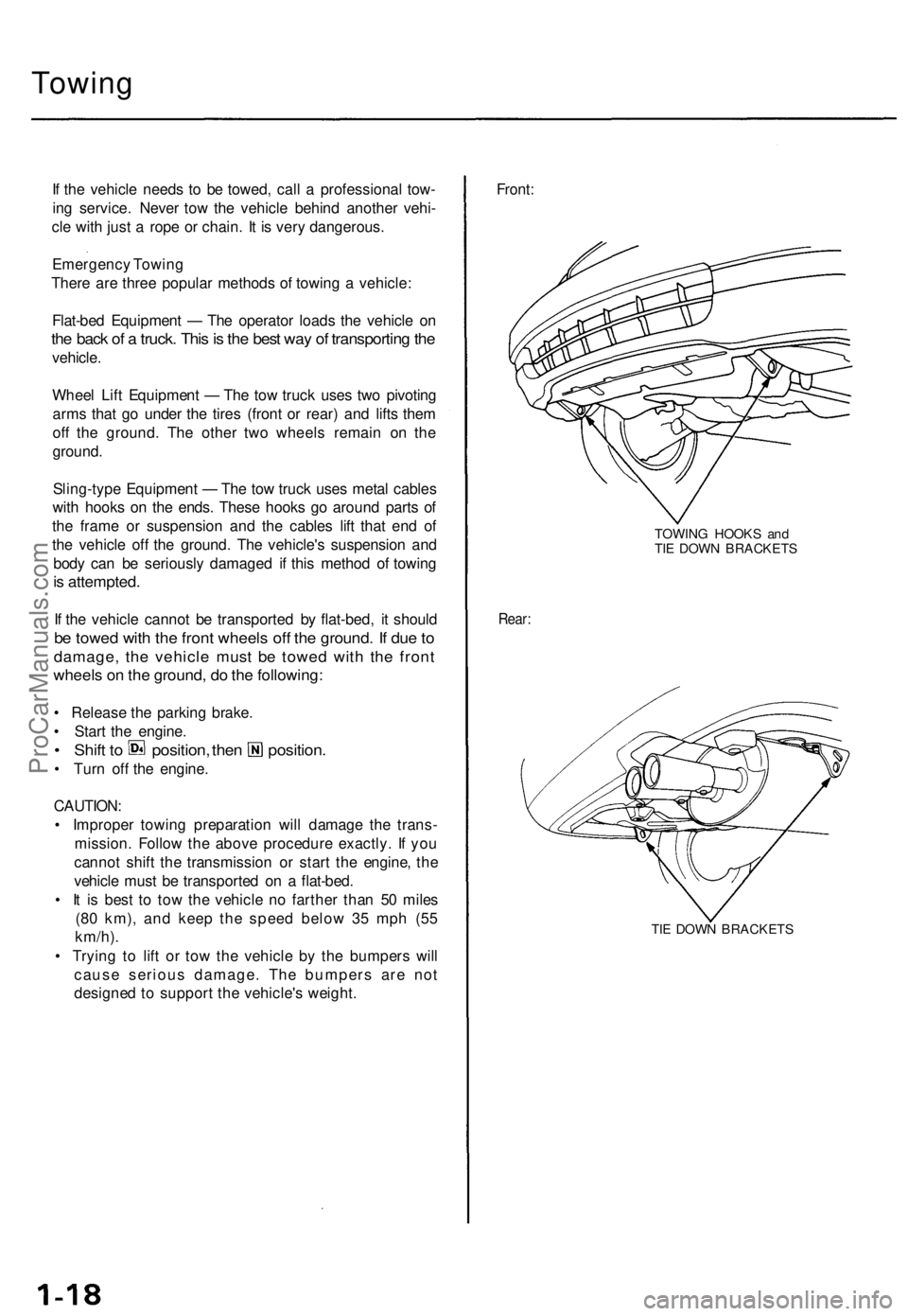Page 676 of 1771
Chassis and Paint Codes
Canada 1996 Model
Vehicle Identification Number
Transmission Number
Engine Number
Vehicle Identification Number
and Canadian Motor Vehicle
Safety Standard Certification.
Paint CodeProCarManuals.com
Page 677 of 1771
Canada 1997 Model
Vehicle Identification Number
Transmission Number
Engine Number
COLOR LABEL
Vehicle Identification Number
and Canadian Motor Vehicle
Safety Standard Certification.
Paint CodeProCarManuals.com
Page 678 of 1771
Chassis and Paint Codes
Canada 1998 Model
Vehicle Identification Number
Transmission Number
Vehicle Identification Number
and Canadian Motor Vehicle
Safety Standard Certification.
Engine Number
COLOR LABEL
Paint CodeProCarManuals.com
Page 679 of 1771
Identification Number Locations
Vehicle Identification
Number
Vehicle Identification
Number
Engine Number
Transmission Number
(Automatic)ProCarManuals.com
Page 683 of 1771
SERVICE INFORMATIO N(1995-1996,1998 )VEHICLE EMISSIO N CONTRO LINFORMATION/VACUU MHOSE ROUTIN G DIAGRA M(1997: KA )VEHICL E EMISSIO N CONTRO LINFORMATIO N (1997 : KC )
COOLAN TINFORMATIO N(1995-1996)VACUUM HOS EROUTIN G DIAGRA M(1997 -1998 : KC)
COOLAN TINFORMATIO N (199 7 -1998 )
AIR CONDITIONIN G
INFORMATIO N
(1995-1997 )
BATTERYCAUTION(1995 -1998 )
AIR CLEANER ,RECOMMENDE DENGINE OI Land FILTER , SPAR KPLUG SERVIC E(1995-1998 )
TIRE INFORMATIO N(1995 - 1996 )TIRE INFORMATIO N(1997 -1998 )
RADIATO R CA PCAUTIO N
(199 5 -1998 )
NOTE: Refe r t o page 1-9a of th e '9 6-9 8 Acura 3.2TL Servic e Manual supplement forfor the differences on this page for the 3.2TL.
ProCarManuals.com
Page 684 of 1771
Under-hood Emissions Control Label
VACUUM HOSE ROUTING DIAGRAM
Emission Group Identification
(1997 model)
VEHICLE EMISSION CONTROL INFORMATION
50ST (50 States):
THIS VEHICLE CONFORMS TO THE U.S. EPA AND THE
STATE OF CALIFORNIA REGULATIONS APPLICABLE TO
1997 MODEL YEAR NEW MOTOR VEHICLES.
49ST (49 States/Federal):
THIS VEHICLE CONFORMS TO THE U.S. EPA REGULA-
TIONS APPLICABLE TO 1997 MODEL YEAR NEW
MOTOR VEHICLES.
CAL (California):
THIS VEHICLE CONFORMS TO THE U.S. EPA AND
STATE OF CALIFORNIA REGULATIONS APPLICABLE TO
1997 MODEL YEAR NEW PASSENGER CARS PROVIDED
THAT THIS VEHICLE IS ONLY INTRODUCED INTO COM-
MERCE FOR SALE IN THE STATE OF CALIFORNIA.
Engine and Evaporative FamiliesProCarManuals.com
Page 685 of 1771
Emission Group Identification
(1998 model)
Engine and Evaporative Families
VACUUM HOSE ROUTING DIAGRAM
50ST (50 States):
THIS VEHICLE CONFORMS TO THE U.S. EPA AND THE
STATE OF CALIFORNIA REGULATIONS APPLICABLE TO
1998 MODEL YEAR NEW MOTOR VEHICLES.
49ST (49 States/Federal):
THIS VEHICLE CONFORMS TO THE U.S. EPA REGULA-
TIONS APPLICABLE TO 1998 MODEL YEAR NEW
MOTOR VEHICLES.
CAL (California):
THIS VEHICLE CONFORMS TO THE U.S. EPA AND
STATE OF CALIFORNIA REGULATIONS APPLICABLE TO
1998 MODEL YEAR NEW PASSENGER CARS PROVIDED
THAT THIS VEHICLE IS ONLY INTRODUCED INTO COM-
MERCE FOR SALE IN THE STATE OF CALIFORNIA.
VEHICLE EMISSION CONTROL INFORMATIONProCarManuals.com
Page 688 of 1771

Towing
If the vehicle needs to be towed, call a professional tow-
ing service. Never tow the vehicle behind another vehi-
cle with just a rope or chain. It is very dangerous.
Emergency Towing
There are three popular methods of towing a vehicle:
Flat-bed Equipment — The operator loads the vehicle on
the back of a truck. This is the best way of transporting the
vehicle.
Wheel Lift Equipment — The tow truck uses two pivoting
arms that go under the tires (front or rear) and lifts them
off the ground. The other two wheels remain on the
ground.
Sling-type Equipment — The tow truck uses metal cables
with hooks on the ends. These hooks go around parts of
the frame or suspension and the cables lift that end of
the vehicle off the ground. The vehicle's suspension and
body can be seriously damaged if this method of towing
is attempted.
If the vehicle cannot be transported by flat-bed, it should
be towed with the front wheels off the ground. If due to
damage, the vehicle must be towed with the front
wheels on the ground, do the following:
• Release the parking brake.
• Start the engine.
• Shift to position, then position.
• Turn off the engine.
CAUTION:
• Improper towing preparation will damage the trans-
mission. Follow the above procedure exactly. If you
cannot shift the transmission or start the engine, the
vehicle must be transported on a flat-bed.
• It is best to tow the vehicle no farther than 50 miles
(80 km), and keep the speed below 35 mph (55
km/h).
• Trying to lift or tow the vehicle by the bumpers will
cause serious damage. The bumpers are not
designed to support the vehicle's weight.
Front:
TOWING HOOKS and
TIE DOWN BRACKETS
Rear:
TIE DOWN BRACKETSProCarManuals.com